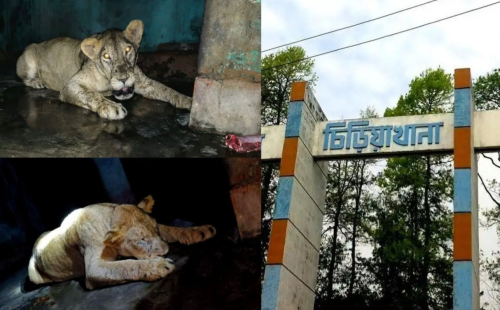The Mughal fort that became a British prison

Walk down the lanes of Old Dhaka today and it is hard to
imagine that the city once revolved around a single building -- Dhaka Fort.
Back in 1610, when Islam Khan, the Mughal subahdar of Bengal, shifted his
capital here, the fort was the nerve centre of Mughal power.
According to historian Dr Abdul Karim, it stood opposite
today's Chawk Bazar, on the site where Dhaka Central Jail would later rise.
The fort was no silent spectator. It housed Mughal
subahdars, the royal mint, and most ominously, a prison. Unlike the British
jail that came later, this one held political detainees. Local zamindars and
rebel leaders often ended up there, awaiting orders or verdicts.
The fort's fortunes shifted over the years. Renovated in
1690 by Subahdar Ibrahim Khan the second, it gradually lost importance as new
palaces and administrative quarters were built across Dhaka. By 1765, after the
East India Company assumed control of Bengal, the fort was in their hands. Two
decades later, in 1788, its prison wing expanded, and by the turn of the 19th
century it had assumed a new identity -- Dhaka Jail.
Dhaka in the early 1800s was a shadow of its Mughal glory.
Once-bustling Ramna had turned into a jungle so dense it was thought to
endanger public health. Charles Doss, then magistrate of Dhaka, intervened.
With little government funding available, he turned to the 'free labour force'
at Dhaka Jail. In 1825, prisoners were put to work clearing Ramna. After three
months of hard labour, they had cleared an oval-shaped section.
Ruins
of Dhaka Fort, Sir Charles D’Oyly (1808–1811).
By then, Dhaka Jail had grown into a formidable
institution. Reports from 1839 describe 10 wards, each with its own courtyard,
and a massive wall enclosing the compound. The jail held around 800 criminals
and about 30 civil prisoners, convicted of crimes ranging from murder and
robbery to cattle theft, forgery, arson, rape, and adultery. Prisoners
frequently fell ill, prompting the construction of a hospital inside. Built in
the 1830s, it was a simple structure -- a long hall with arched passages, verandas,
and rooms for isolating the sick.
By the mid-19th century, Dhaka Jail was one of East
Bengal's most important prisons. Inmates were put to work producing chairs,
tablecloths, curtain fabrics, mustard oil, and even lime paint. Some of these
items were sold in the market. Jailers, mostly Europeans, earned a modest 100
rupees a month, but supplemented their income by taking a 5 percent cut from
sales. Some even set up private businesses inside the jail.
Arthur Lloyd Clay, joint collector of Dhaka in the 1860s,
noted that prisoners often left the jail looking healthier than when they
arrived. Adequate food and care made the difference, though treatment was not
equal. European inmates received prime mutton and could complain if the quality
fell short, while native prisoners had no such privilege.
By the 1860s, Dhaka Jail had become the main facility for
"difficult" prisoners across East Bengal. Convicts from Sylhet,
Tripura, and Faridpur were sent there, and by 1879 the prison was officially
declared the Central Jail for Dhaka and Chattogram divisions. With its new
status came new responsibilities.
A superintendent replaced the magistrate as head, and
expenses soared. By 1893, the annual cost of running the jail -- food,
clothing, hospitals, and staff -- totalled Tk 51,328, a significant sum for the
time.
















